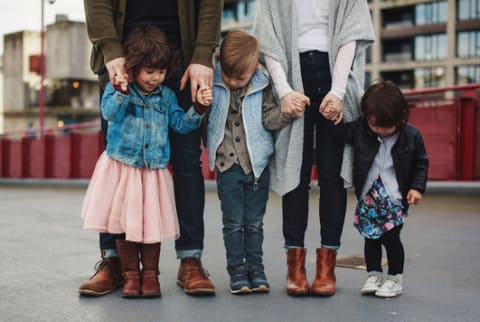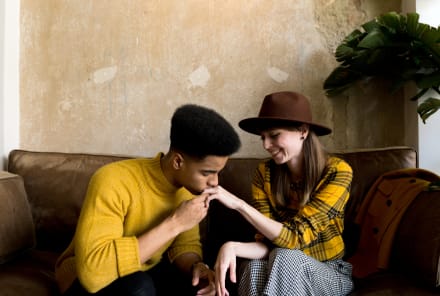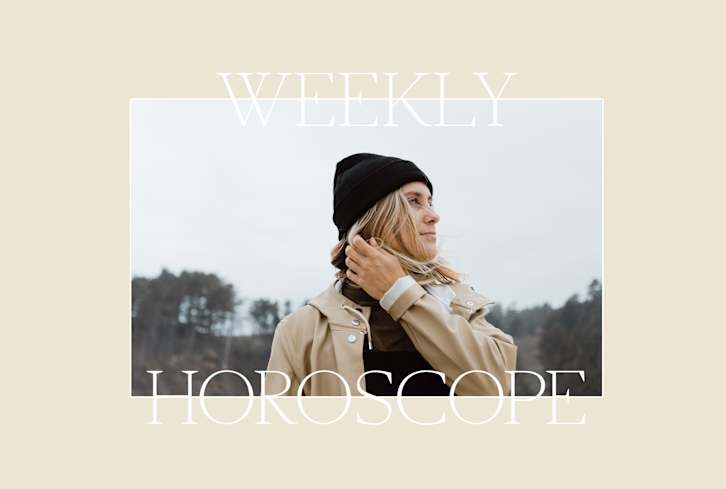Advertisement


Money was tight when I was a kid. Getting new clothes meant a trip to the thrift store. If we could find something for 25 cents or less at a garage sale, I would sometimes get a new toy. I longed to own things that were mine first instead of hand-me-downs, pined for the sparkly plastic items I saw advertised on TV, and envied the girls in my school who seemed to wear a new outfit every day.
As an adult, I thought success would be marked by my possessions. When my husband and I bought our first home, we filled it to the brim with new furniture, carefully selected art, and matching everything—throw pillows included. But instead of fulfillment, I felt trapped by my possessions.
Keeping up my house, cleaning and protecting all my nice things, seemed to take up a huge chunk of my time. Rather than relaxing on my new couch and admiring the walls I'd prudently painted, I saw the stains, the flaws, and felt like those walls were closing in around me.
I longed to feel free, to travel and show our kids the world, but I felt like I was drowning in stuff.
By the time we had two children, our possessions had increased exponentially. There were baby contraptions of all shapes and sizes, more onesies and booties than our daughters could ever wear, and copious toys that cost much more than 25 cents at a garage sale. I was anxious and agitated often. I longed to feel free, to travel and show our kids the world, but I felt like I was drowning in stuff.
By the time our kids were 3 and 5 years old, I'd had enough. I realized that physical possessions not only weren't the key to my happiness; they were an anchor that kept our family bound to a lifestyle we didn't actually want.
So in 2010, we did something radical. We gave away or sold nearly everything that we owned and narrowed our possessions down to two suitcases each. We began a life as digital nomads and have lived in four different countries since. My husband and I need only an internet connection to do our work, and our kids were young enough when we sold our house that they don't remember a life other than the one we have now.

Because of the sharing economy in this modern age, it's surprisingly easy to live without actually owning many things. We rent fully furnished homes that come with everything, down to silverware and towels. We rent a car when we need one. We rely on libraries, online books and music, and when we do buy items, we mostly buy secondhand so we can easily donate them again when we're finished. We aren't actually going without the comforts that make life easier—but when it's time to move on, we still only have two suitcases each.
Our children have learned to appreciate awesome hand-me-downs and play with what they find in their surroundings.
About two years into our nomadic lifestyle, a friend lovingly suggested I might have a problem settling down that stemmed from childhood issues. With the dearest of intentions, she suggested I talk to a therapist. So I tried. I sat down on my friend's therapist's couch and told her about our family's unusual lifestyle: how we started in Australia, had made our way through a few states, and were planning stints in Bali, Costa Rica, and Europe. "That sounds wonderful," she said. "I wish I could do that!"
After much soul-searching (and eventually the confirmation from a licensed therapist), I've realized I'm not running away from anything. I'm not trying to escape reality or responsibility by choosing to live with minimal possessions. I'm simply more interested in having a variety of experiences, exposing my children to different cultures in hopes they'll grow up to be compassionate global citizens, and having as few things to fold and clean as possible.

Making the choice to limit our possessions—not because we can't afford them but because they aren't necessary—feels incredibly freeing. We spend our money on travel, unique experiences, and healthy food instead. Our children have learned to appreciate awesome hand-me-downs and play with what they find in their surroundings. I've seen them make elaborate games out of some sticks and a blanket. I like the resourcefulness our lifestyle has inspired in them.
I know this is an unconventional choice, but for us, it's the right one.
As Helen Keller said, "The best and most beautiful things in the world cannot be seen or even touched—they must be felt with the heart."
Watch Next
Enjoy some of our favorite clips from classes
Enjoy some of our favorite clips from classes
What Is Meditation?
Mindfulness/Spirituality | Light Watkins
Box Breathing
Mindfulness/Spirituality | Gwen Dittmar
What Breathwork Can Address
Mindfulness/Spirituality | Gwen Dittmar
The 8 Limbs of Yoga - What is Asana?
Yoga | Caley Alyssa
Two Standing Postures to Open Up Tight Hips
Yoga | Caley Alyssa
How Plants Can Optimize Athletic Performance
Nutrition | Rich Roll
What to Eat Before a Workout
Nutrition | Rich Roll
How Ayurveda Helps Us Navigate Modern Life
Nutrition | Sahara Rose
Messages About Love & Relationships
Love & Relationships | Esther Perel
Love Languages
Love & Relationships | Esther Perel











